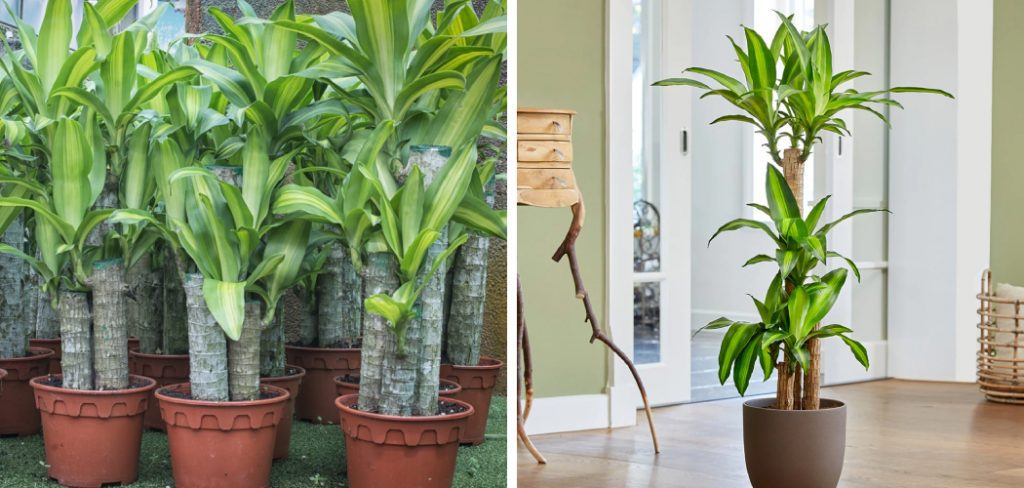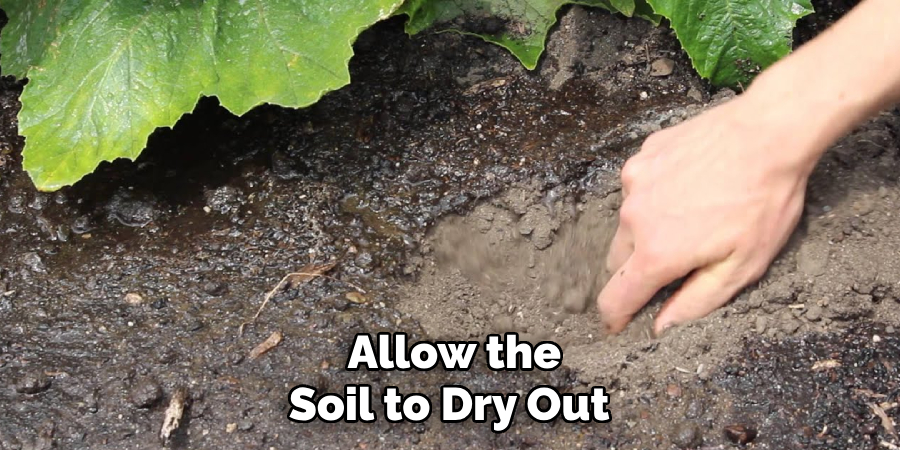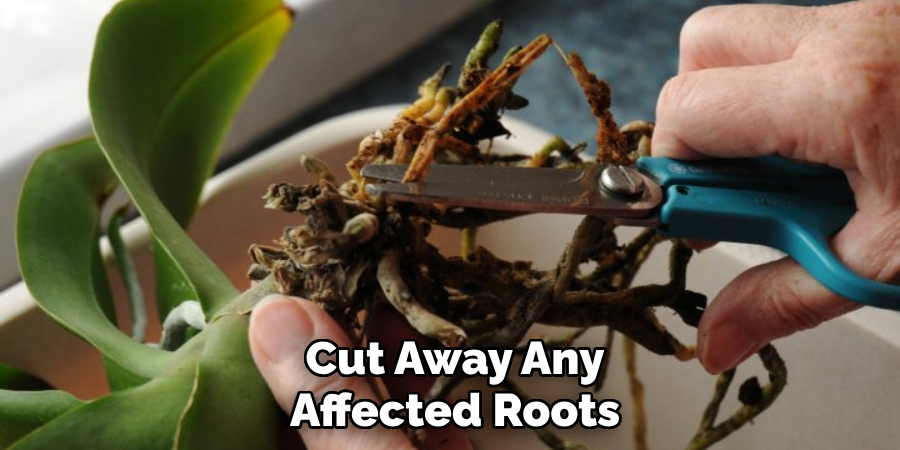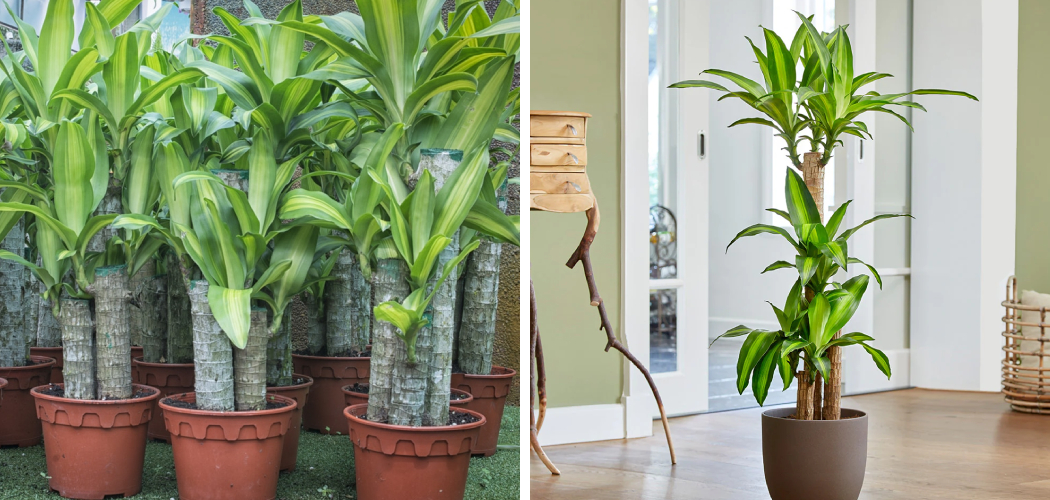To save a corn plant from root rot, remove the affected soil and treat the roots with a fungicide. Additionally, ensure proper drainage and avoid overwatering the plant.
Root rot can be a common problem for corn plants, but with these steps, you can effectively revive and save your plant from further damage. Remember to regularly check the moisture levels of the soil and provide adequate sunlight and nutrients for healthy growth.
By taking preventative measures and addressing root rot promptly, you can ensure the longevity and vitality of your corn plant.

How to Save a Corn Plant from Root Rot: Step by Step Guide
Identifying The Early Signs Of Root Rot
Root rot is a common problem that can affect corn plants. By identifying the early signs of root rot, such as yellowing or wilting leaves, stunted growth, and brown or black roots, you can take steps to save your plant.
To prevent further damage, it’s important to provide proper drainage and avoid overwatering. Remove any affected roots and replant the corn in fresh, well-draining soil. Additionally, promoting good air circulation and avoiding overcrowding can help prevent the spread of root rot.
Regularly inspecting your plants for signs of root rot and taking proactive measures will increase the chances of saving your corn plants and promoting healthy growth. Remember, prevention is key when it comes to the health of your plants. So, early identification and prompt action are crucial for saving your corn plants from root rot.
Assessing The Severity Of Root Rot In Corn Plants
Root rot can be a serious issue for corn plants, but assessing its severity is crucial. To determine the extent of the problem, checking for root discoloration is the first step. Look for any abnormal coloring, such as darkening or browning of the roots.
Additionally, examine the root structure carefully. Healthy roots should be firm and white, while rot-infected roots may appear mushy or slimy. Evaluating the overall health of the plant is also important. Consider factors like leaf yellowing, stunted growth, or wilting.
Taking these steps will help you determine the severity of the root rot and take appropriate measures to save your corn plant. Remember, early detection and prompt action are key in combating root rot.
Choosing Well-Draining Soil And Proper Planting Techniques
Choosing the right soil composition is essential to save a corn plant from root rot. It should have excellent drainage properties to prevent waterlogging. Adequate drainage is crucial to ensure that excess water doesn’t accumulate around the roots. When planting corn, proper spacing and planting depth are important factors.
Giving each plant enough space allows for proper airflow and reduces the risk of root rot. Planting the corn at the right depth ensures that the roots are not exposed to water-saturated soil. By following these guidelines, you can increase the chances of saving your corn plant from root rot and promote its healthy growth.
Remember to consider the soil composition, drainage, spacing, and planting depth to give your corn plant the best chance of thriving.
Monitoring Irrigation And Watering Practices
Proper irrigation and watering practices are crucial when it comes to saving a corn plant from root rot. One key to avoiding overwatering is to water at the base of the plant, rather than overhead. This helps prevent excessive moisture from accumulating on the leaves and promotes healthy root growth.

Additionally, it is important to allow the soil to dry out between watering sessions. This allows the roots to breathe and prevents the growth of water-loving pathogens that can cause root rot. By monitoring and adjusting your irrigation and watering practices, you can provide optimal conditions for your corn plant to thrive and prevent the onset of root rot.
Enhancing Air Circulation And Reducing Excessive Moisture
Root rot can be a common issue for corn plants, but there are ways to prevent it. Enhancing air circulation is crucial in reducing excessive moisture. One way to achieve this is by pruning neighboring plants to allow for better airflow.
Additionally, providing adequate spacing between plants is important to avoid overcrowding in the garden. This helps to prevent the buildup of moisture around the roots. By following these guidelines, you can save your corn plant from root rot and ensure its healthy growth.
Removing Infected Roots And Soil
To save a corn plant from root rot, start by carefully digging up the plant. Once exposed, cut away any affected roots to prevent further spread. After removing the infected roots, it’s important to replace the soil in the affected area.

By doing this, you can help eliminate any remaining pathogens and create a healthy environment for the plant to grow. Remember to handle the plant gently throughout the process to minimize stress. Taking these steps to remove infected roots and replace the soil can significantly increase the chances of saving your corn plant from the detrimental effects of root rot.
Applying Fungicides And Beneficial Bacteria
Root rot can severely damage corn plants, but there are effective measures to safeguard them. Fungicides play a crucial role in controlling the spread of root rot. These powerful substances inhibit the growth of harmful fungi that cause the disease.
Another effective approach is introducing beneficial bacteria to the soil. These bacteria promote root health and combat the harmful effects of root rot. For those concerned about their environmental impact and the use of chemicals, there are organic and environmentally friendly options available.
By choosing these alternatives, you can protect your corn plants while also preserving the ecosystem. Keeping your plants healthy from root rot is essential for their growth and productivity. With these strategies, you can ensure the vitality and longevity of your corn plants.
Adjusting Environmental Conditions For Recovery
Adjust the environmental conditions for a corn plant suffering from root rot. Provide optimal sunlight and temperature to promote recovery. Adjust the ph levels in the soil to create a favorable environment for the plant. Apply appropriate fertilizers and nutrients to support its growth and vitality.
Maintain a balanced moisture level in the soil, ensuring it is not too wet or dry. Regularly inspect the plant for any signs of stress or disease, taking immediate action if necessary. By carefully adjusting the environmental conditions and providing proper care, you can save a corn plant from root rot and help it thrive once again.
Frequently Asked Questions For How To Save A Corn Plant From Root Rot
How Do I Know If My Corn Plant Has Root Rot?
Root rot in corn plants is characterized by wilting, yellowing leaves, the presence of dark, mushy root tips, and a foul odor. If you notice these symptoms and the soil feels excessively moist, it’s likely your corn plant has root rot.
Can A Corn Plant Recover From Root Rot?
Yes, with prompt action, a corn plant can recover from root rot. Remove the affected plant from its pot, gently wash off the rotted roots, and trim away any dark, mushy portions. Repot the plant in fresh, well-draining soil, and avoid overwatering in the future to prevent a recurrence.
How Can I Prevent Root Rot In My Corn Plant?
To prevent root rot in your corn plant, ensure it is potted in a well-draining soil mix specifically formulated for houseplants. Water the plant only when the top inch of soil feels dry, and avoid leaving it in standing water.
Proper air circulation and adequate lighting are also essential for preventing root rot.
Conclusion
To ensure the health and vitality of your corn plant, it is crucial to be proactive in preventing and treating root rot. By following the steps outlined in this blog post, you can effectively save your corn plant from this destructive condition.
Regularly examining the plant’s roots and ensuring proper drainage and moisture levels are simple but effective ways to prevent root rot from occurring in the first place. If root rot does occur, make sure to promptly address the issue by removing affected roots, adjusting watering habits, and providing adequate air circulation.
Utilizing organic treatments such as hydrogen peroxide or beneficial fungi can also go a long way in combating root rot and promoting a healthy plant. Remember, taking proactive measures and regularly monitoring your corn plant is the key to preventing and saving it from root rot.
With your dedication and attentiveness, your corn plant will flourish and thrive for years to come.

